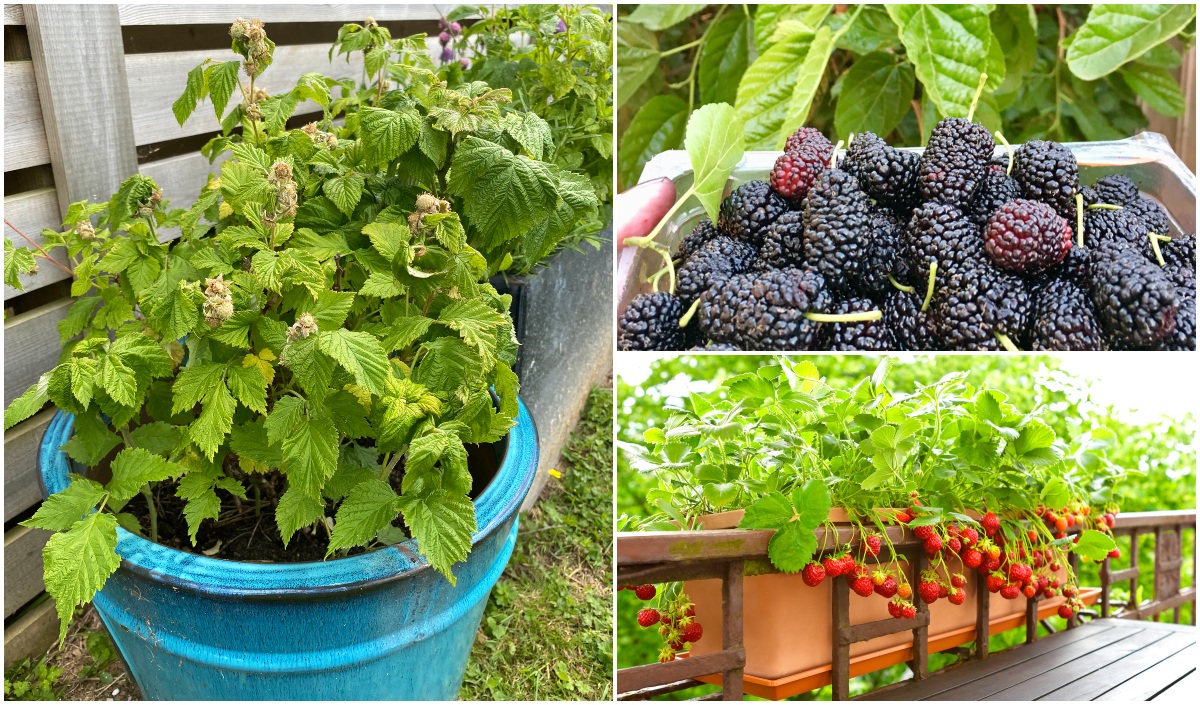
It’s hard to pass by those mounds of freshly picked strawberries at the market, for their aroma is incredibly enticing. Can you smell when you close your eyes?
The same is true for all manner of berries which are often tucked into cakes, pies, jams and other sweet delicacies. But what if you don’t have the amount of land that it takes to grow a huge patch of succulent berries?
Well, there is always the farmers market. Though it’s a lot more fun, and more rewarding, to grow some by yourself.
If you have the ambition, but not enough space, welcome to the world of container gardening.
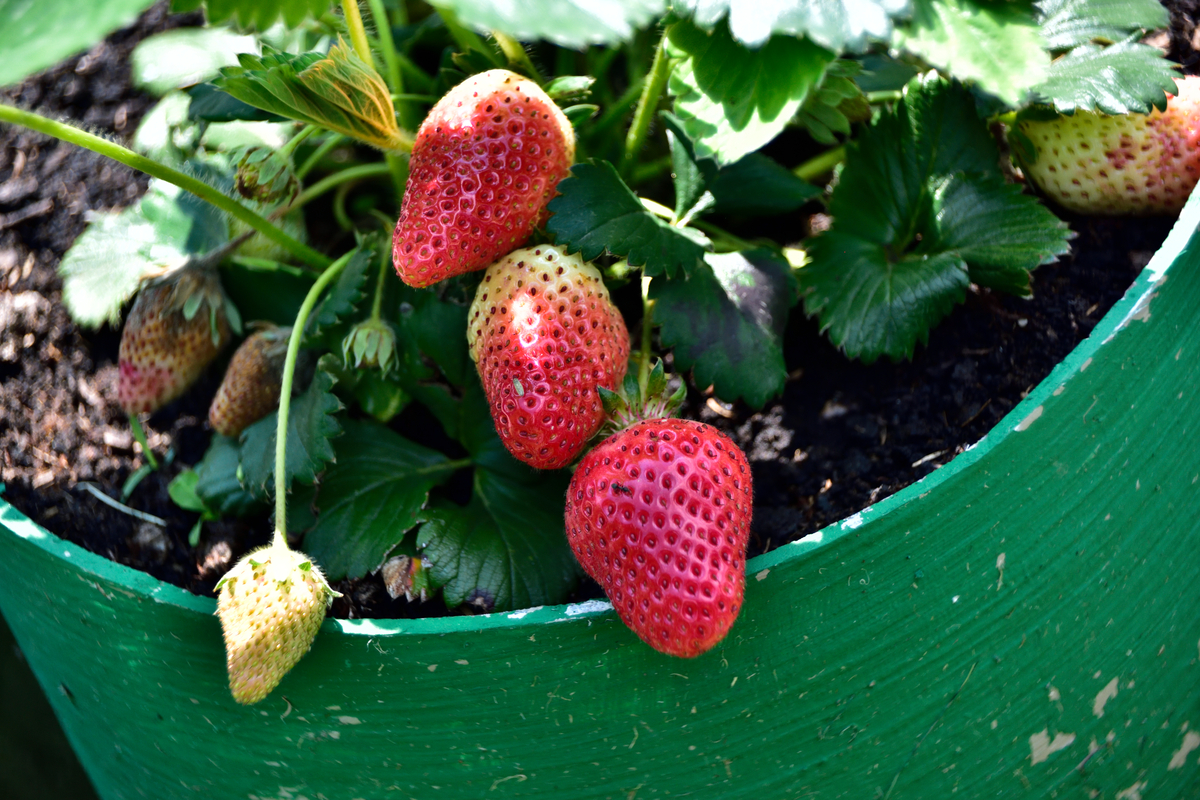
Any pot will do, so long as it is deep enough to contain the roots. Naturally, water is an essential element of the growing process, which can easily be managed with a watering can. Weeds are also comfortable to supervise, so your overall workload will be light.
You may be wondering, what berries can be planted in containers?
You’ll be pleased to know that while strawberries top the list, there are several more of your favorite berries to choose from:
- raspberries
- blackberries
- blueberries
- black currants
- gooseberries
- mulberries
Keep reading to find out which berry varieties are best suitable for being grown in containers.
1. Strawberries
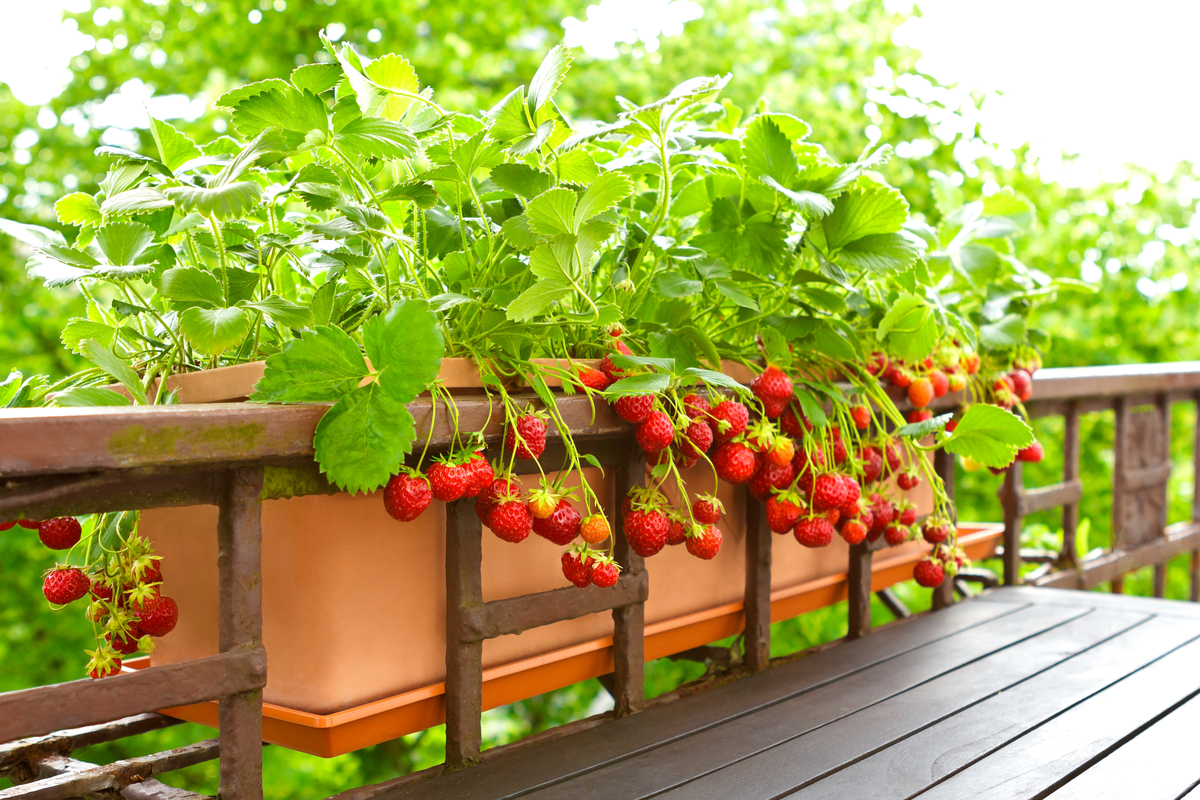
You don’t need a whole patch of strawberries to enjoy the season. Even if you eat just one mouthwatering strawberry from your own container garden, it’s definitely worth the effort of growing them. But likely, you’ll get much more than that, as strawberries are prolific growers.
As a side note: most strawberry varieties produce little to no fruit in the first year. So don’t get too excited for creamy roasted strawberry turnovers just yet. As you plant them, strawberries first concentrate growth on their roots. It’s in the second year that flowers and berries begin to appear in mass.
To grow strawberries in pots, start with bare-root crowns or transplants. It’s far more difficult to propagate them from seed. This way, your harvest will arrive sooner than later.
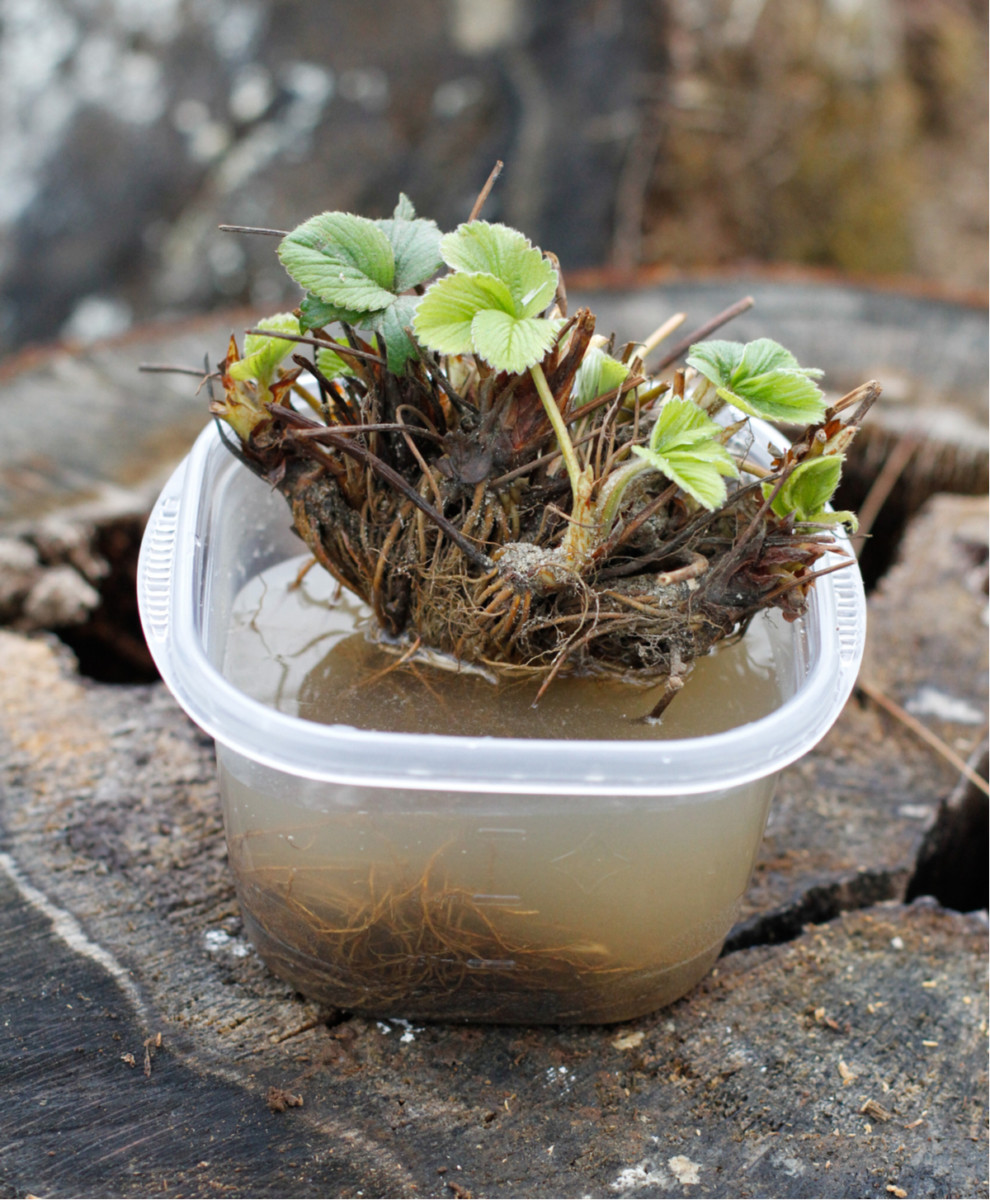
Keep in mind that strawberries love the sun, 8-12 hours a day being ideal, but they also don’t like to get too hot. With container growing this may be a problem. Be sure to choose a pot that is light in color to reflect some of the sunlight.
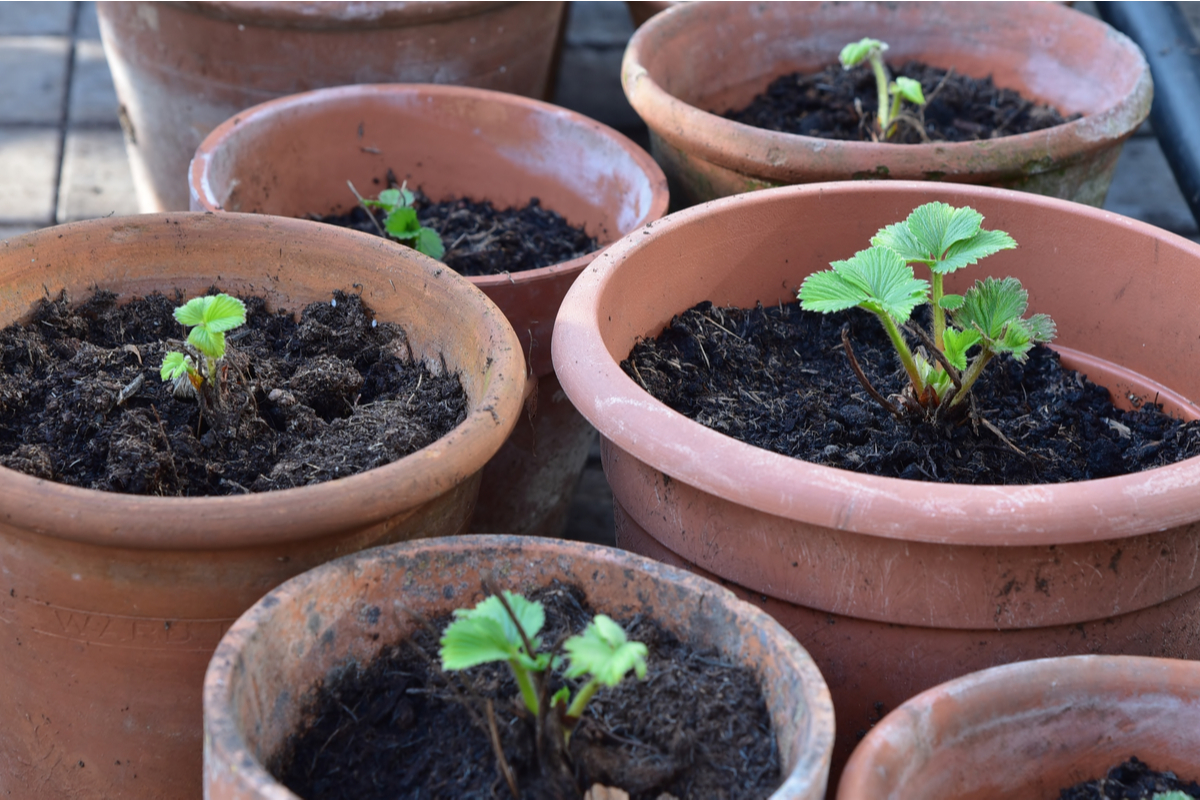
As with growing any berries in containers, drainage holes are essential.
Check out these strawberry growing tutorials to gather inspiration:
15 Innovative Strawberry Planting Ideas For Big Harvests In Tiny Spaces
How to Make an Easy to Water Strawberry Pot
Video Tutorial: How to Make a Strawberry Pallet Planter from Lovely Greens
Best Strawberry Varieties To Plant In Containers For Big Harvests
Any variety of strawberry can be grown in containers, though some grow better than others.
June-Bearing Types
These are late spring and early summer varieties where most of the berries ripen at the same time (perfect if you want to make a small batch of strawberry jam or jelly).
Cabot – easy-to-grow strawberry with huge harvests, cold hardy.
Jewel – a low-growing plant that self-pollinates. A hybrid more resistant to most common strawberry problems with large berries.
Tillamook – a fantastic variety originating from Oregon, these strawberries reward you with an abundant harvest, even when grown in pots.
Ever-Bearing Varieties
As the name suggests, they gift you with strawberries throughout the season from late spring to early fall. They are less winter hardy than June-bearing varieties.
Ozark Beauty – if you are growing in zones 4-8, this variety from Arkansas produces a uniform, delicious fruit.
Tristar – this variety is ideal for hanging baskets. Thank to its sweetness, it lends itself to dessert plates and bowls. With a heavy crop in early spring, a lighter summer harvest and larger berries in fall, you’ll be able to indulge throughout the season.
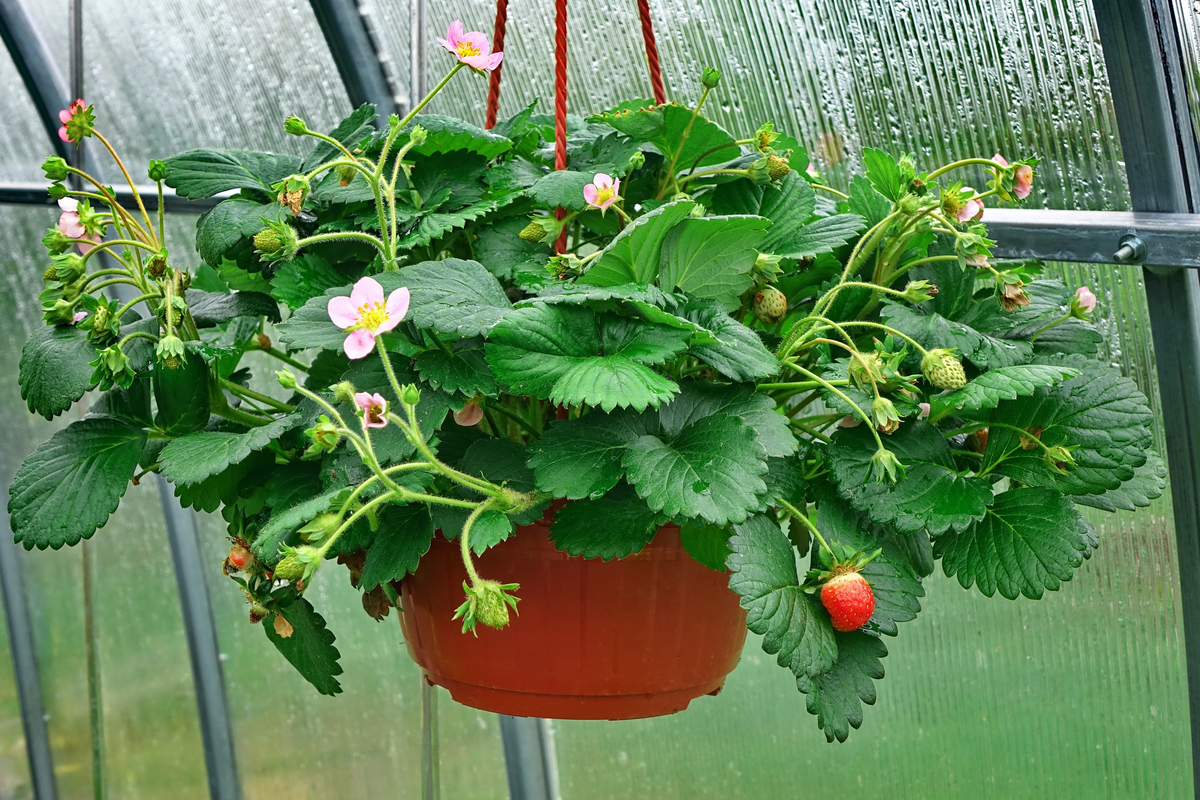
Alpine Strawberries
These strawberries are intensely flavored, smaller fruits, ideal for smaller containers.
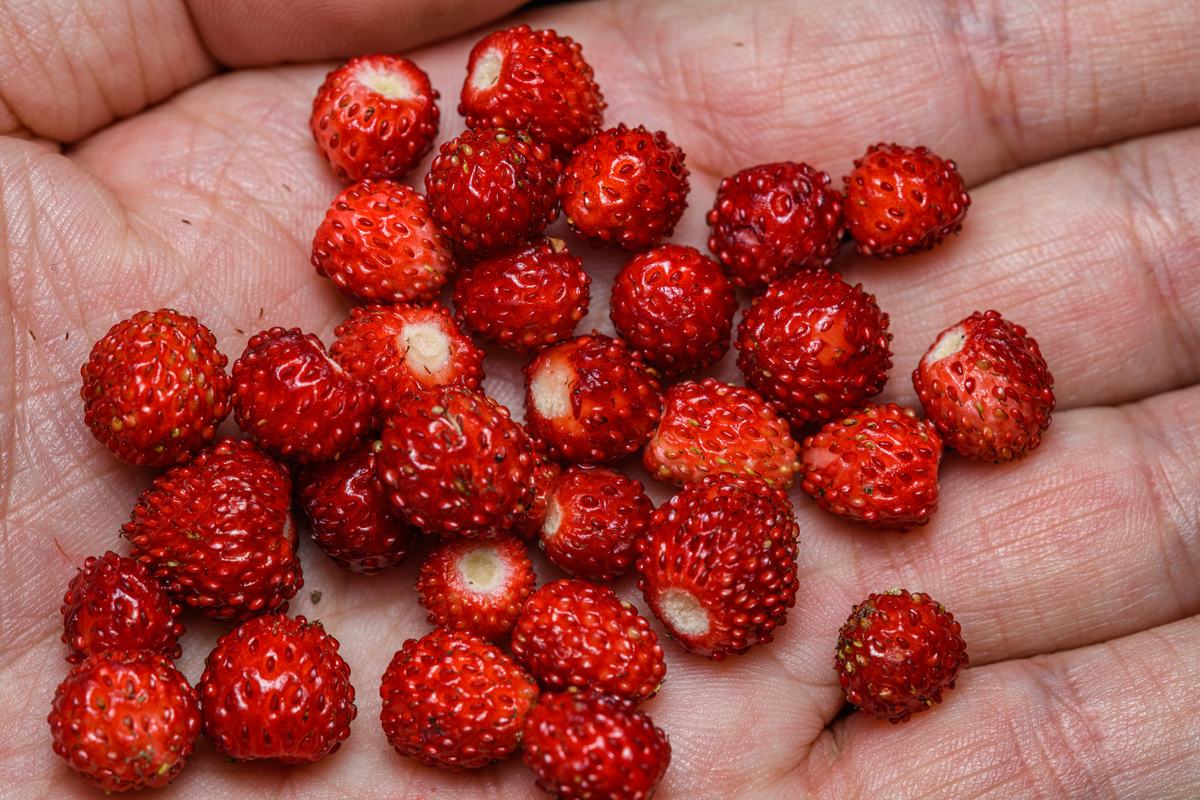
Alexandria – thimble sized-fruits which are more for decoration or a burst of flavor, than for jam, alpine strawberries are intensely flavorful ever-bearing plants.
Mignonette – these dainty plants fill in the spaces of containers, as well as acting as a border edge. Savor the sweet little berries all summer long.
2. Blueberries
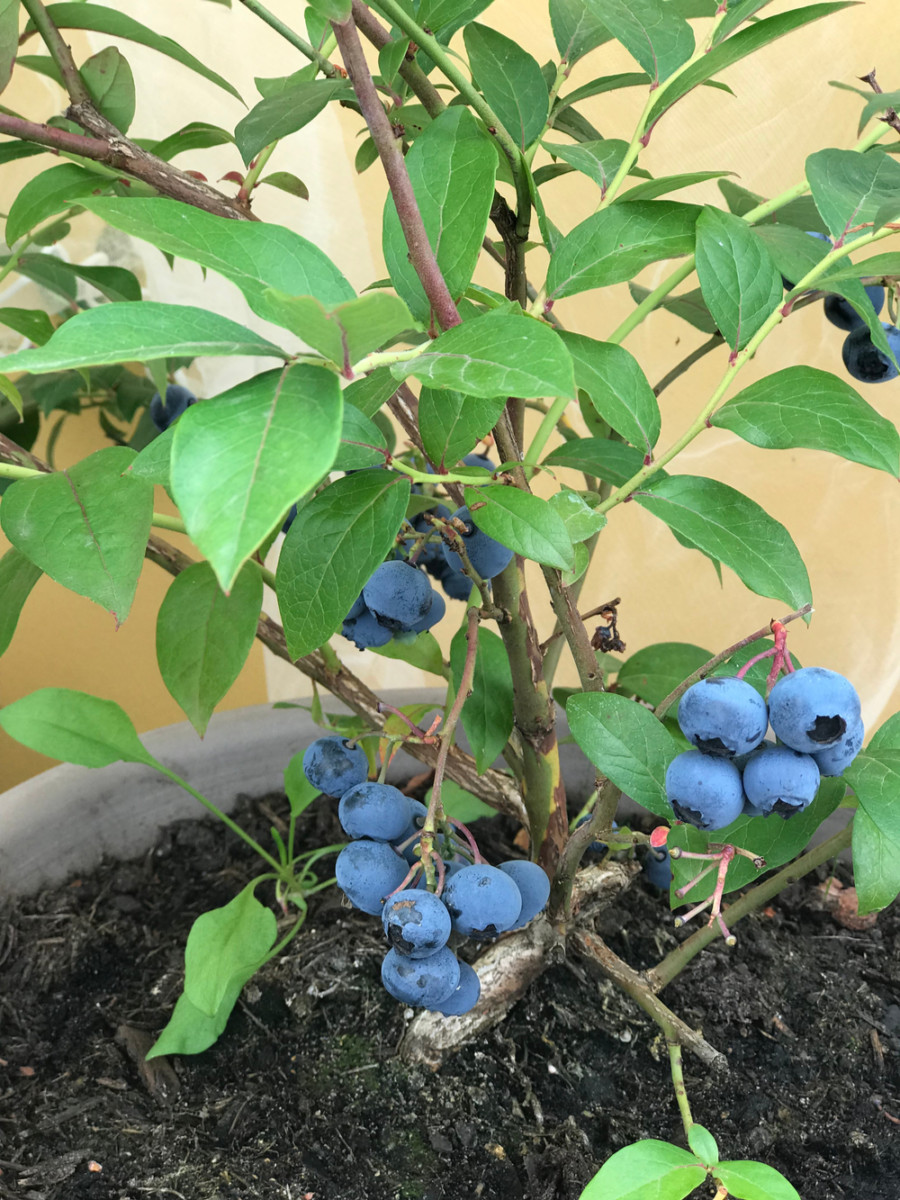
Elizabeth has a fantastic, extremely informative article on how to grow blueberries in pots, so I won’t dish out all the details here. Go and read it if blueberries are on your mind.
What I would like to say, which you probably already know, is that blueberries are a highly nutritious berry full of beneficial antioxidants. Therefore, if you don’t often get to buy them in season, grow them yourself for the freshest bites.
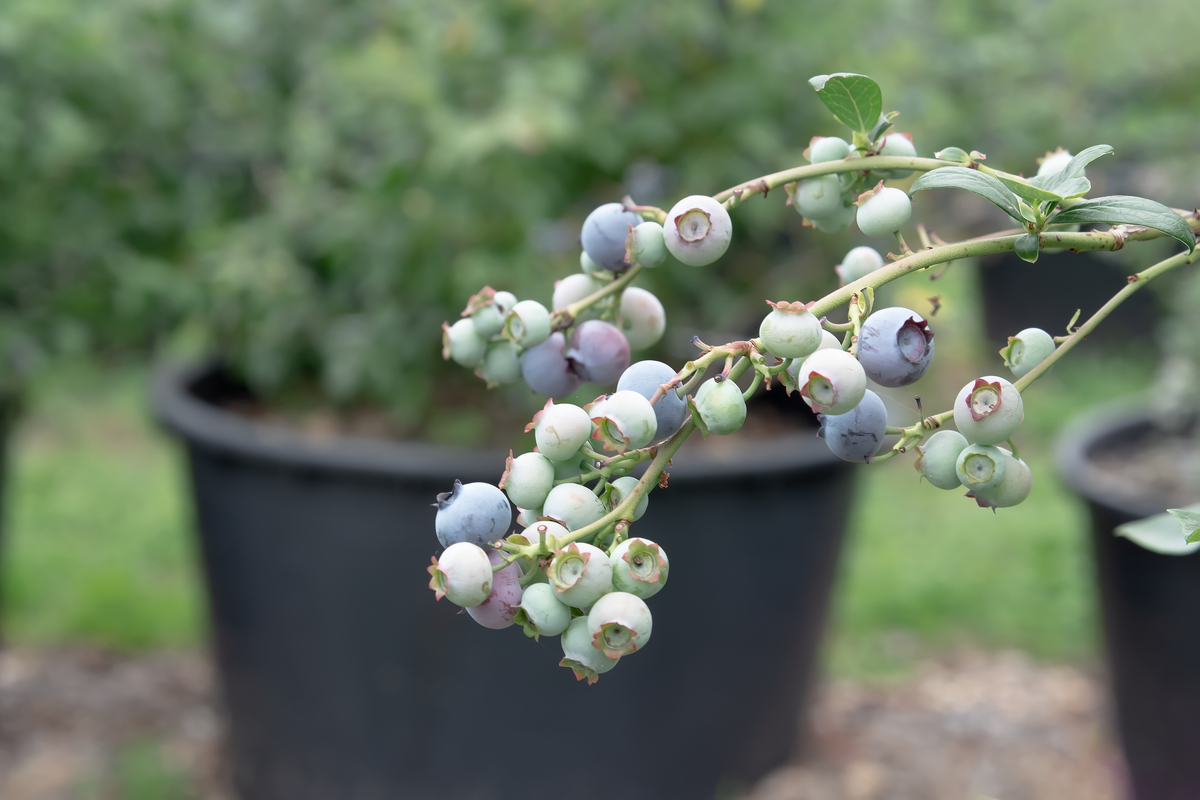
It’s also worth noting that many varieties of blueberry are suited to container growing, due to their need for acidic soil. While you can make your garden soil more acidic, it’s much easier to control the pH of a pot or two.
Let’s discover a couple of varieties that can work well in your backyard container garden.
Best Blueberry Varieties To Plant In Containers
Patriot – a Northern highbush variety that is a prolific producer. It needs a large pot, as it can grow to a height of 4-6 feet, though it can be pruned back to keep its shape.
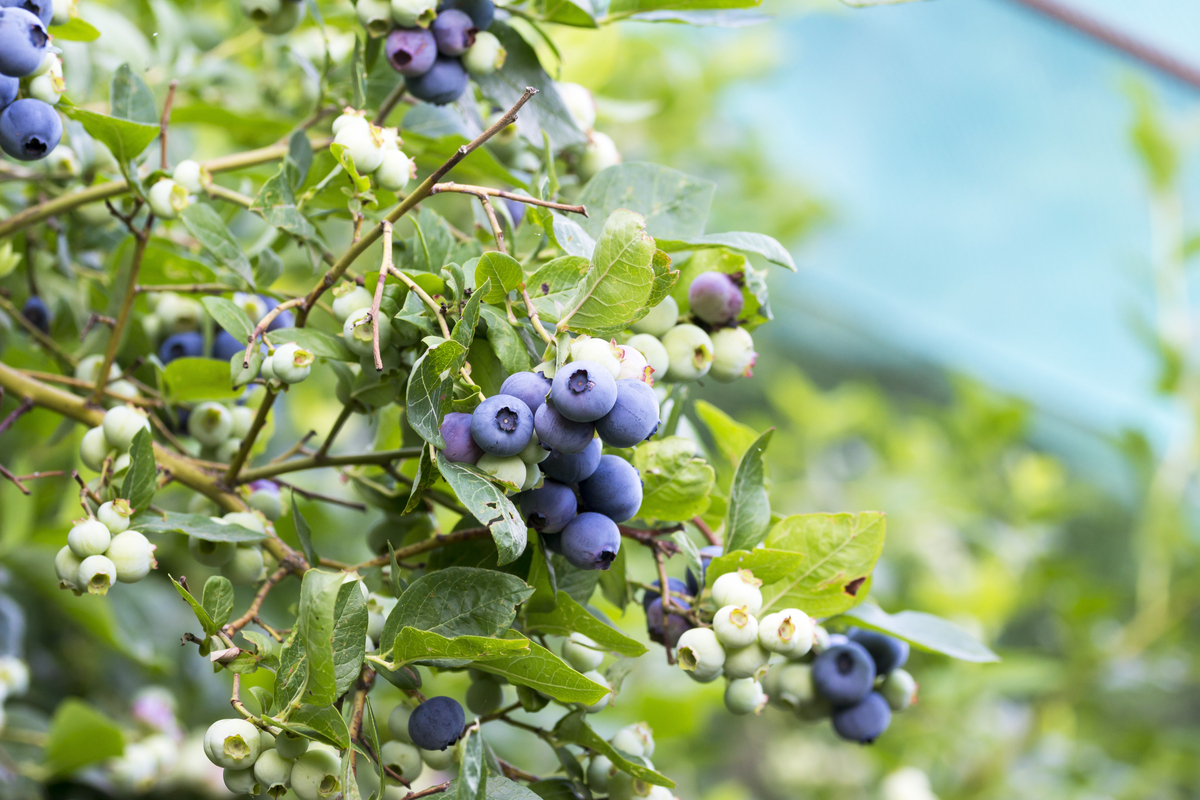
Northsky – a beautiful dwarf variety that is super cold-hardy with a wild blueberry flavor. Not only do they produce delicious berries, their fall color is absolutely stunning!
3. Blackberries
Planting blackberries in containers might not be among your first thoughts, knowing that they are some of the most wild berries out there.
If you’ve ever harvested them by the side of a field, you probably came home with more than a few scratches to go with your small container of berries.
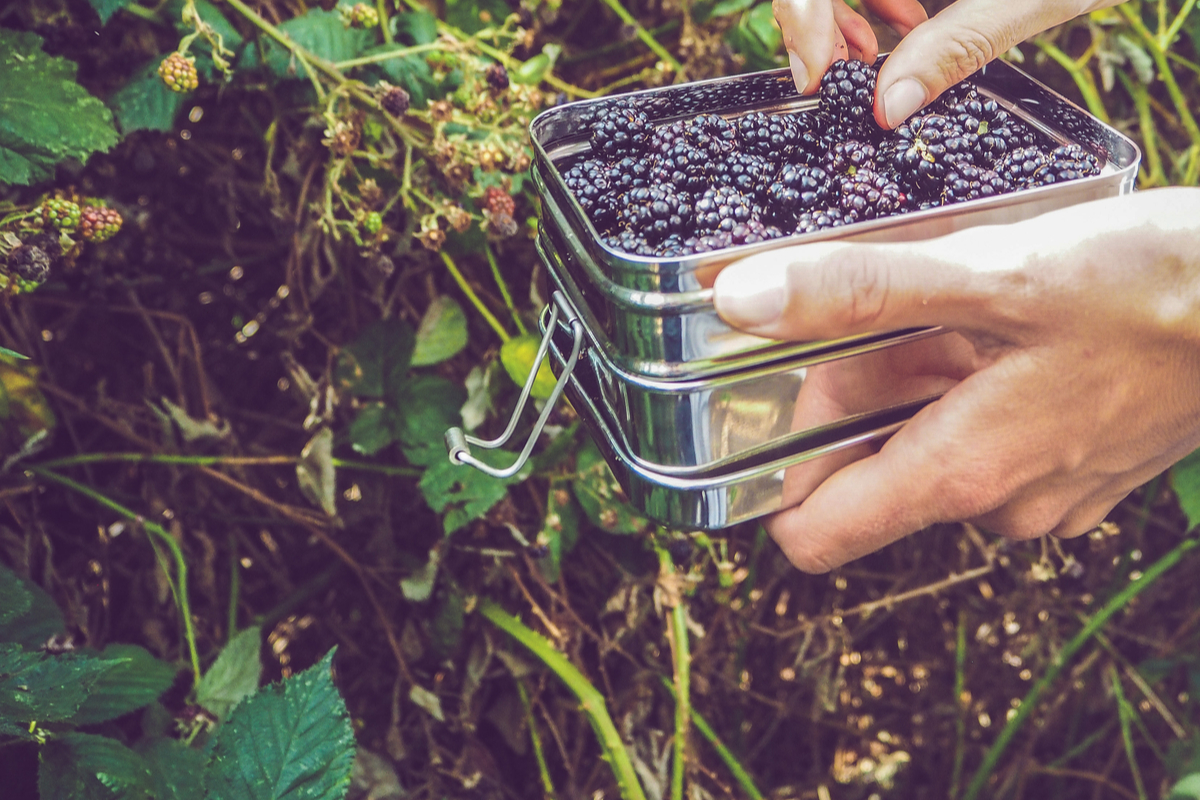
Plus, they seem to take over garden space every time they are given the chance. Give them a foot and they’ll take the whole fence line.
Yet, blackberries are bursting with vitamin C and K, they are high in manganese and in fiber. Not to mention the antioxidants and anthocyanins. If you’ve been searching high and low for a nutrient dense food that tastes as good as it looks, grow some blackberries. You won’t regret it.
Best Blackberry Varieties To Plant In Containers
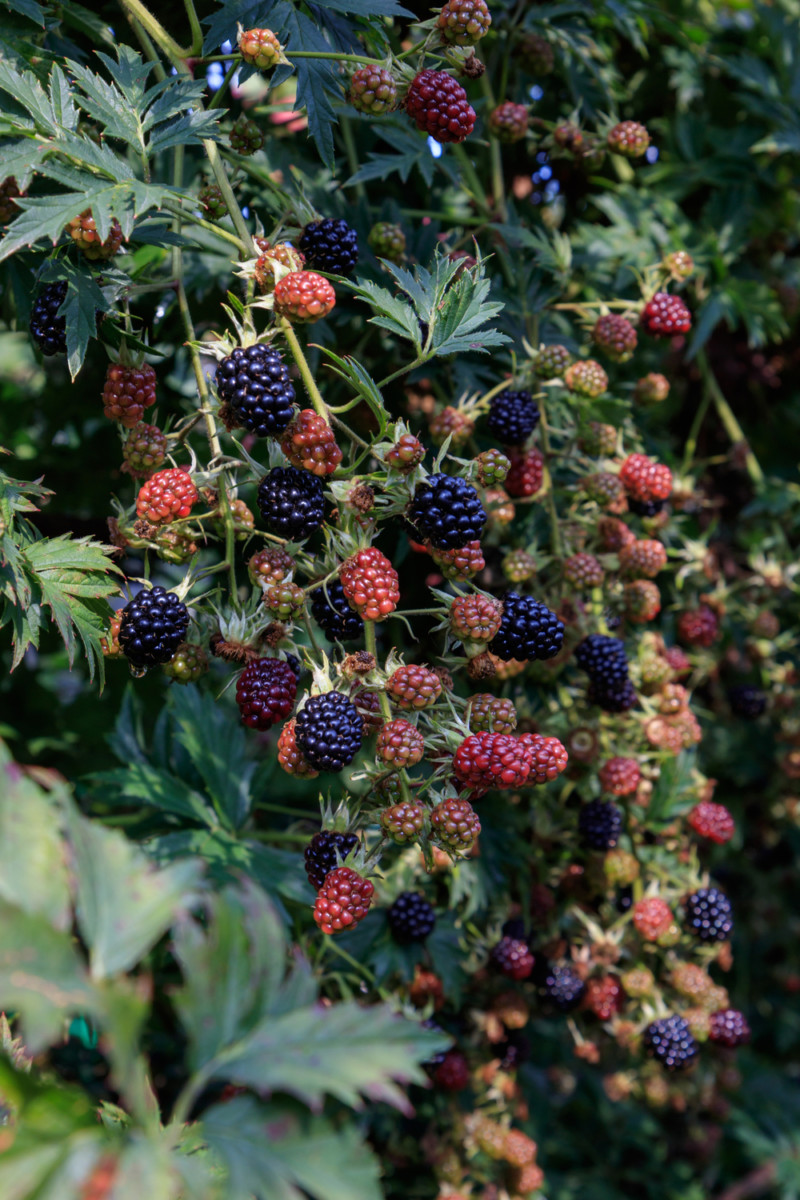
Blackberries are best known for their sprawling habit, sort of like the mint that attempts to take over your garden. Plant the canes in a container and everything changes.
Taming them is not without its efforts though. When time comes to pot them up, you’ll also have to think about a trellis for those with trailing vines.
It all depends on whether the variety you choose is erect, semi-erect or a trailing vine.
As far as containers go, opt for something large, such as a whiskey barrel planter, and set them in full sun (6-8 hours of sunlight a day).
Arapaho – an early producer, on erect canes with exceptionally small seeds; blackberries ripen over the course of a month. Perfect for tarts and pies – sounds great to me!
Baby Cakes – if large, juicy berries are your thing, this thornless dwarf blackberry variety is ideal for backyard patios due to its compact habit.
Chester – this variety has a mild flavor and lends itself to combining with other fruits when preserving jams or making fresh pies. It’s also self-pollinating, so it will produce berries on its own.
Natchez – thornless, semi-upright, with large berries. What more could you expect from a blackberry bush? Oh, wait, it’s also one of the first producers of the season.
4. Raspberries
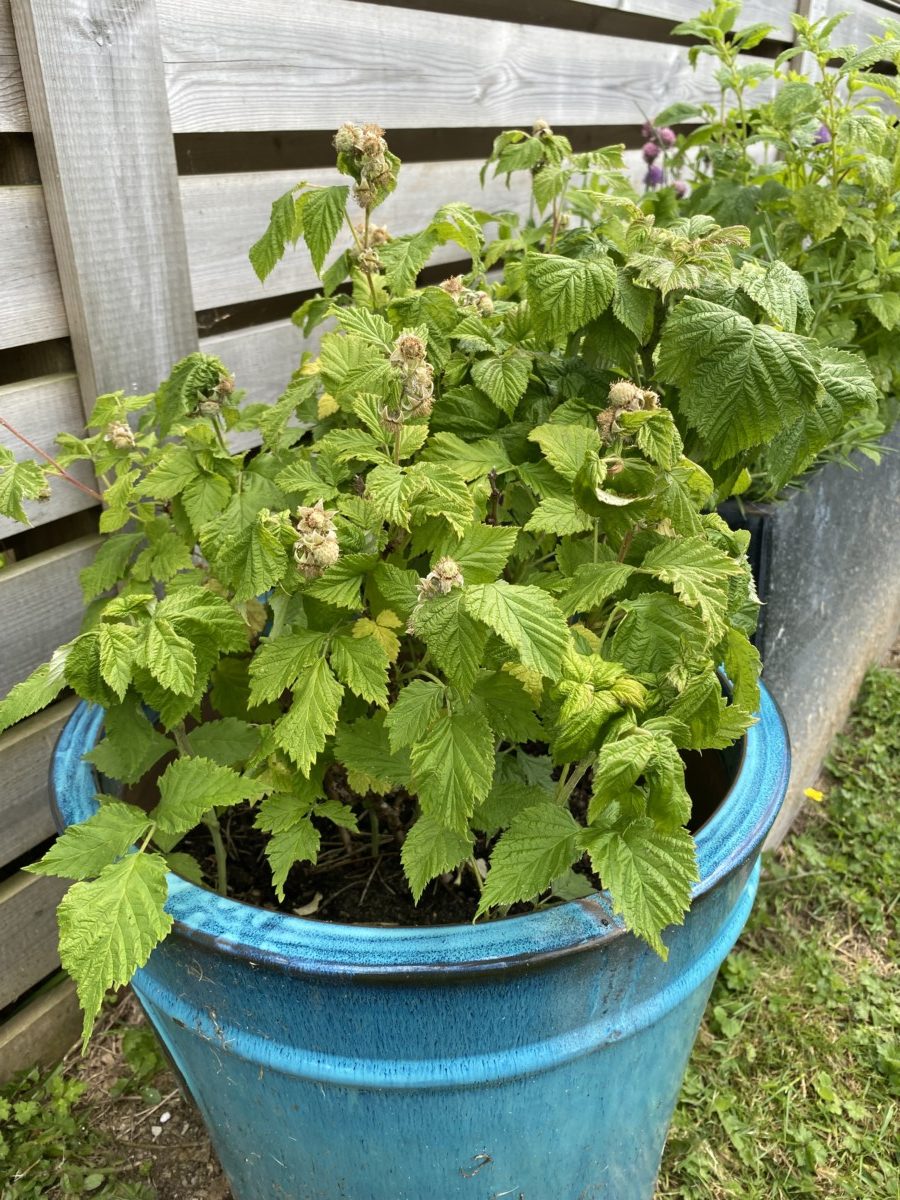
Whether you are growing raspberries for syrup, jam or simply for the pleasure of fresh eating, you’re going to have to find out the 7 secrets for your best ever raspberry harvest.
Pruning, mulching and fertilizing are among the top tips, and all of these apply to container grown raspberries as well. Don’t forget that raspberry leaves are useful too, especially for women’s health. So even if the amount of berries are beneath your expectations, you’ll still have a wonderful harvest.
Part of the allure of growing your own raspberries is that they tend to be super expensive from the store. This is, in part, due to their short shelf life. Not to mention that most berries need to be picked by hand.
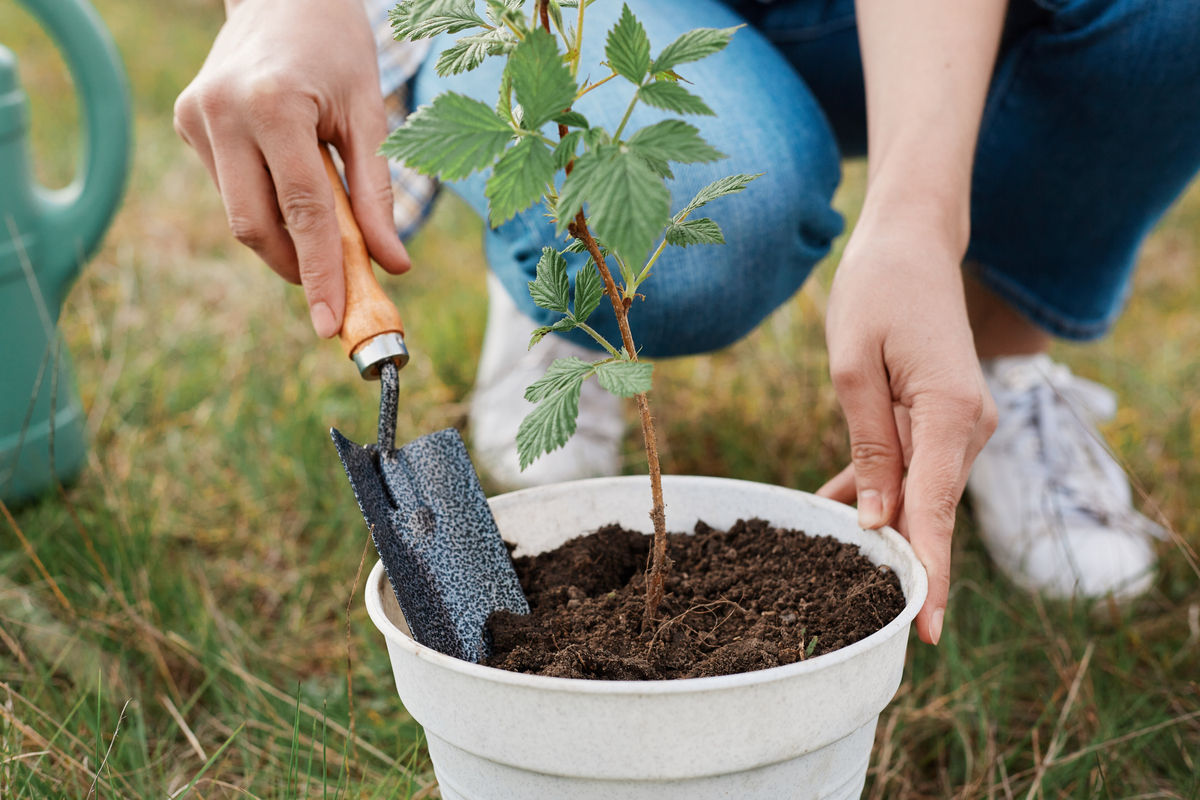
Dream up your favorite raspberry recipes, then find a pot large enough for a handful of canes. Keep scrolling to find out which raspberries are suitable for container growing.
Best Raspberries to Grow In Containers
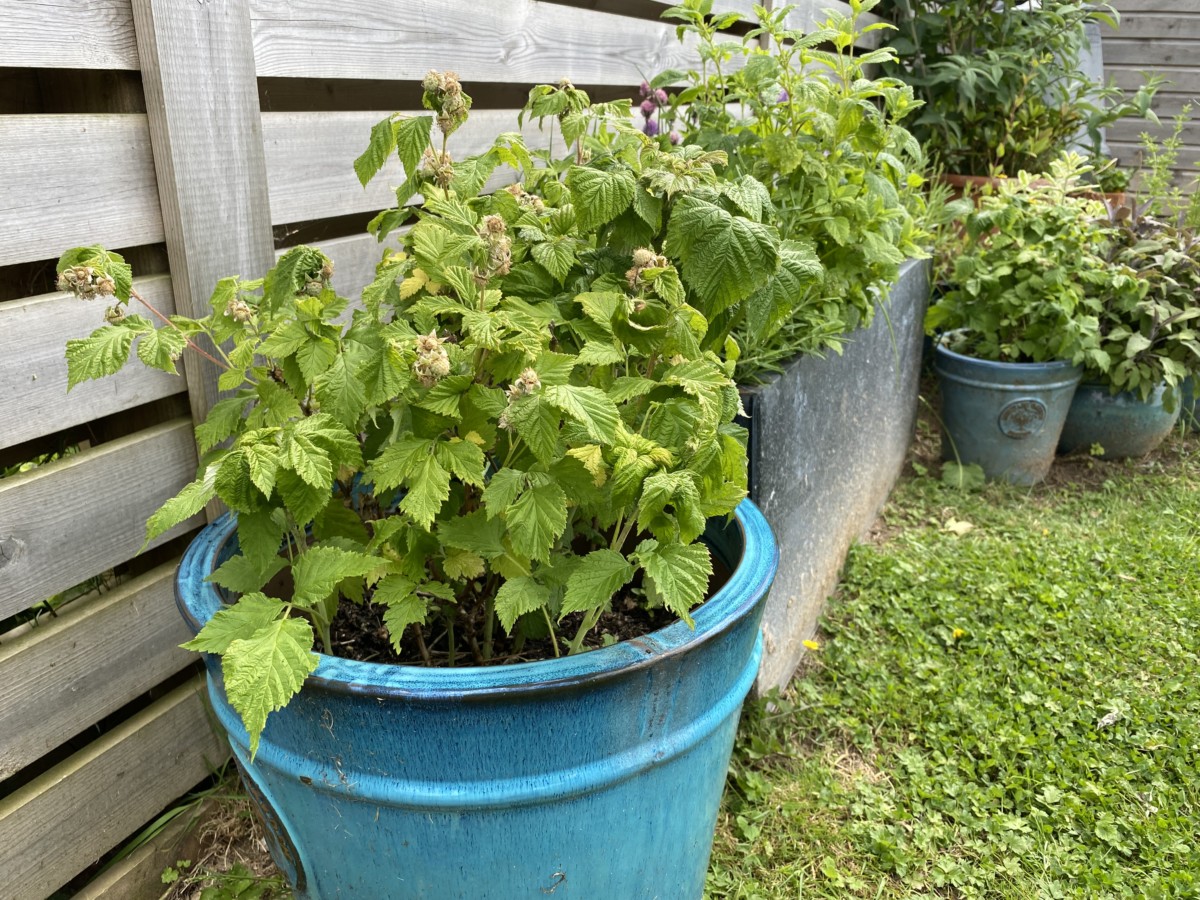
Most varieties are too large to grow in containers, here are a few that aren’t:
Anne – a pale yellow, fall-bearing raspberry that some say has hints of apricot. Not your typical raspberry, yet a beautiful one to look at and a tasty one to bake with. Or make wine. Your choice.
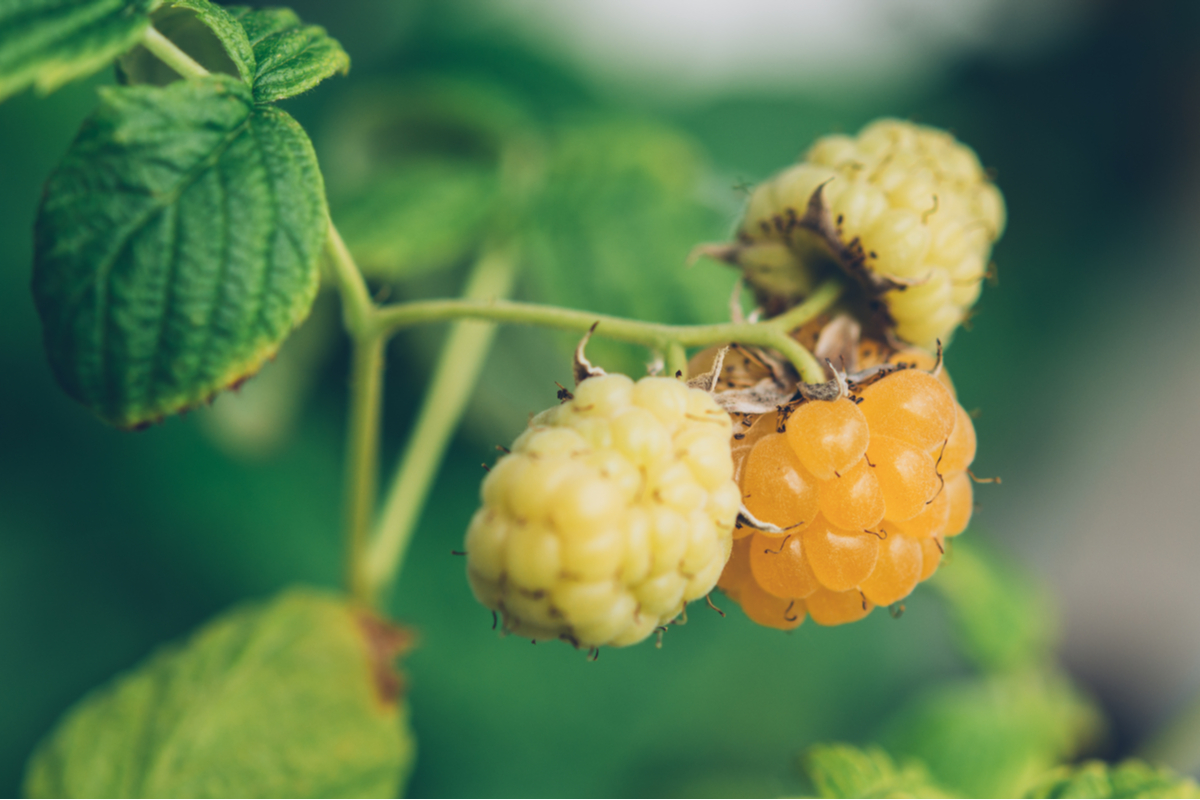
Heritage – is an autumn-bearing variety that gifts you with delicious red fruits from August into October. Fruit is firm and juicy. Canes are sturdy and upright, with no need for a trellis.
Glencoe Purple Thornless – a more rare raspberry that might find its way into your pot is a thornless, clumping variety that is superior for container planting. It won’t spread as yellow and red varieties do.
Raspberry Shortcake – you’ll often find this one out of stock, so keep checking back if it sounds interesting. The fruit flavor is on the sweeter side with a vanilla essence. It grows more as a bush, being compact and completely thornless. Absolutely ideal for growing in containers.
5. Blackcurrants
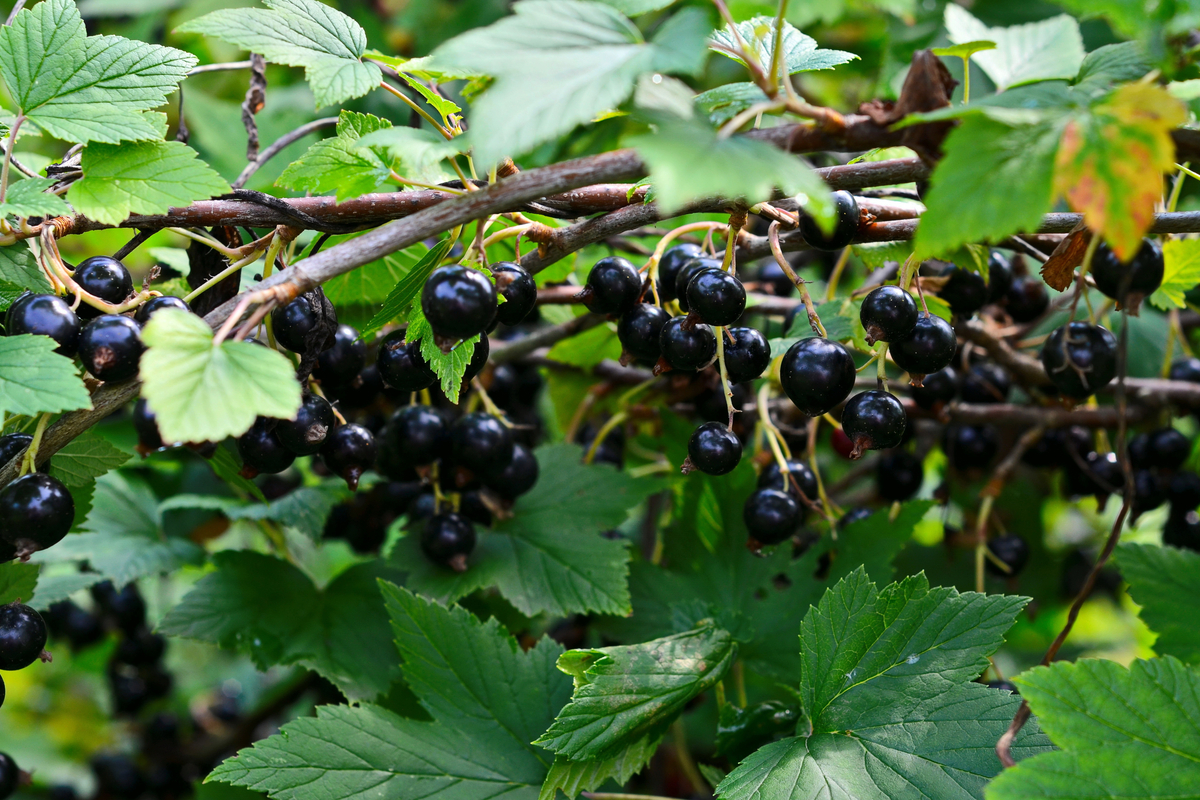
Blackcurrant jam isn’t, let’s say, as desirable as strawberry jam, though it does have its merits. These lovely, little tart berries go the distance in giving your immune system a boost. Both when harvested fresh, or steeped in a delightful tincture.
According to Blue Fruit Farm, “A tablespoon of black currants could aid with eye function for those who use a computer regularly and they also have been shown to improve mental performance.” Sounds like something many of us could benefit from.
They might be harder to find since they are a previously banned fruit making a comeback, but it’s worth the extra effort to seek them out, even for the flavor alone.
Best Blackcurrant Varieties to Grow In Containers
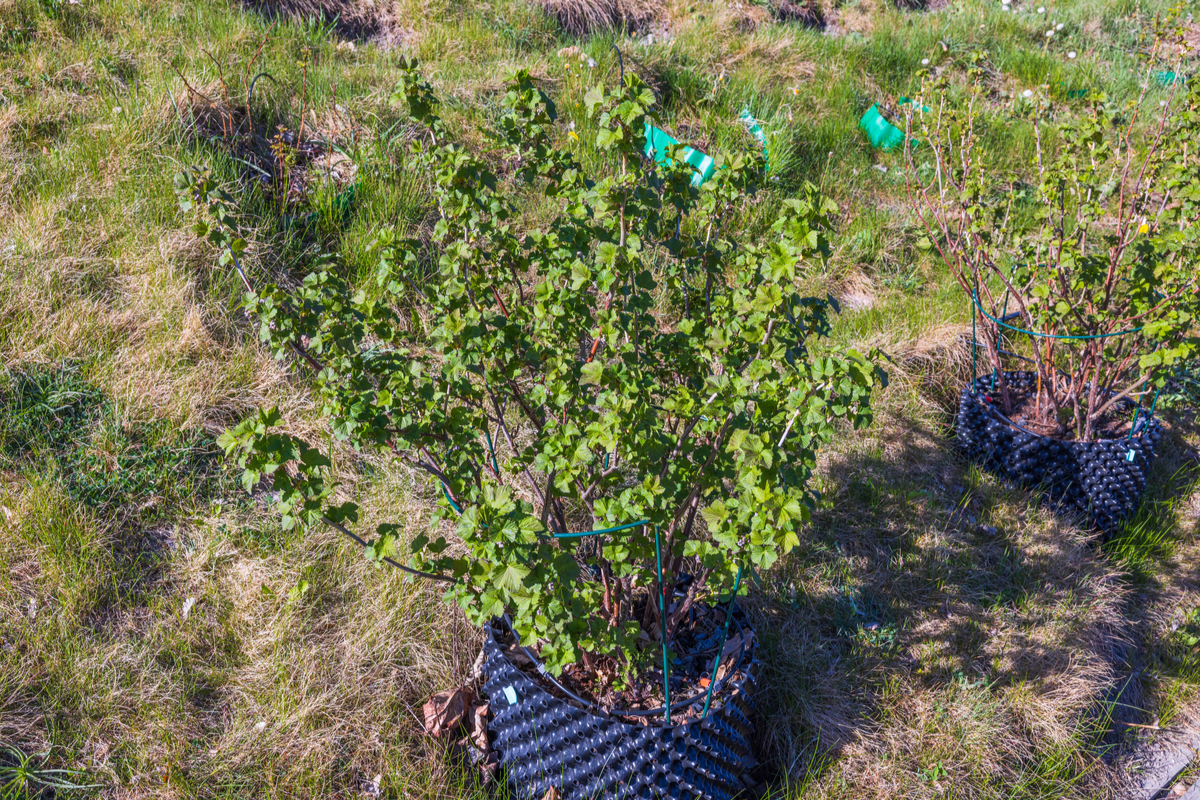
Please note that not all states allow for the growing of blackcurrants.
Here are a few suggestions to get you started on your black currant variety search:
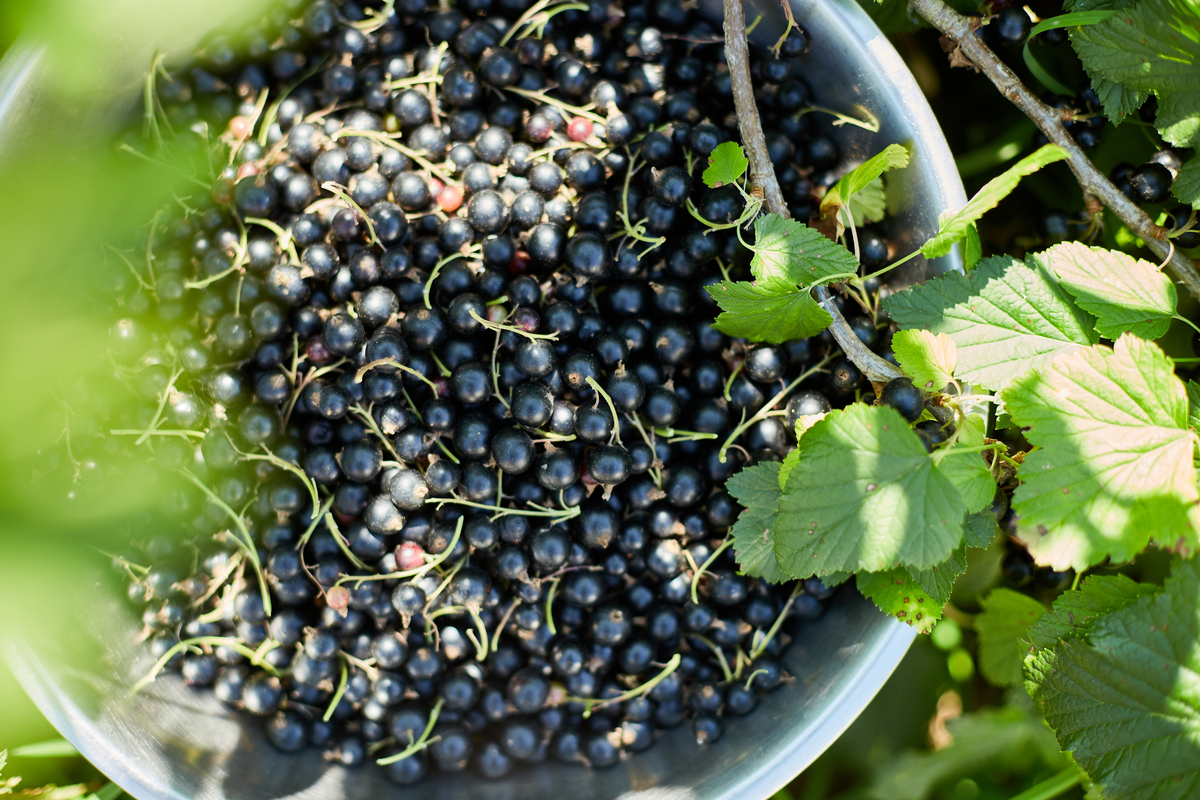
Ben Connan – a small, bush variety with large glossy fruits. Cold hardy and mildew resistant.
Ben Sarek – these are compact bushes which can easily be maintained at 3′ tall, all the while providing you with hundreds of beneficial berries.
Titania – bushes need to be planted in larger pots since they reach 5-6′; berries are sweet and plentiful.
Don’t forget about planting white and red currants too.
6. Gooseberries
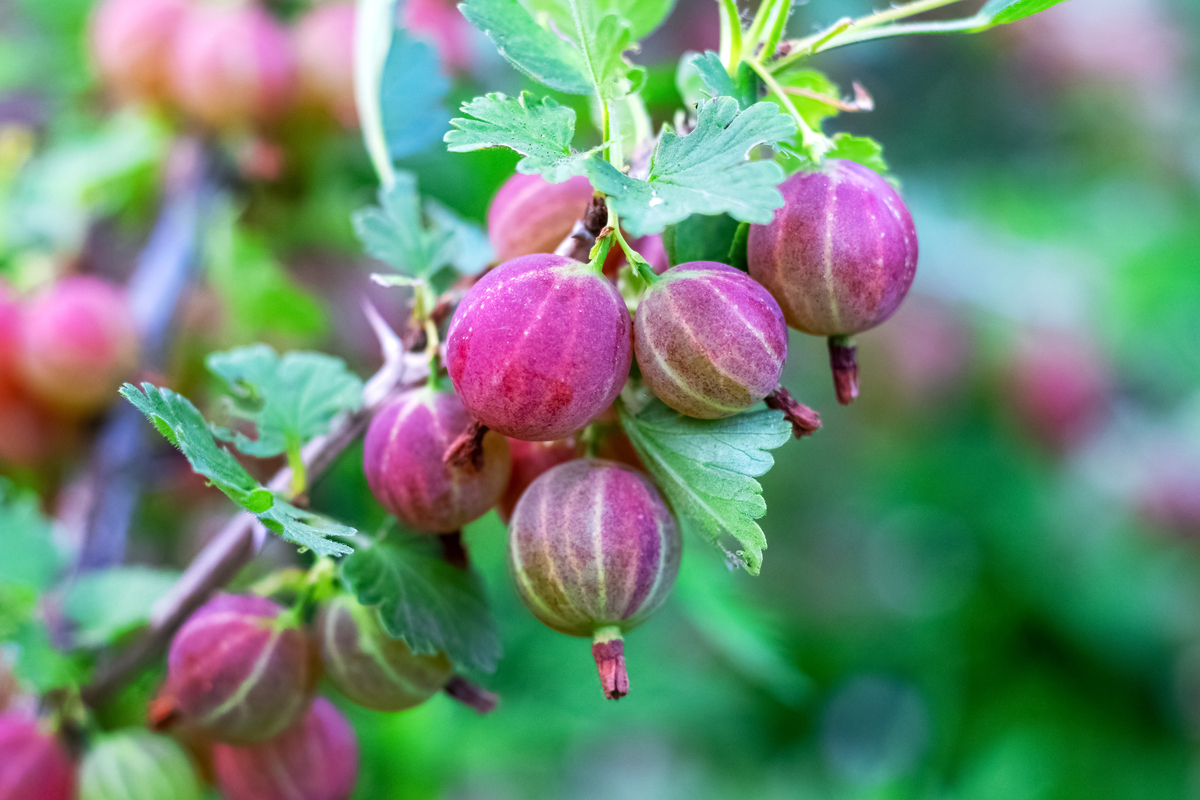
Homegrown and handpicked gooseberries are nothing like the green, underripe stones you get from the store. When they are harvested on time, gooseberries are more than sour, they are richly sweet and juicy with a hint of tartness. They are, in fact, America’s forgotten fruit.
Gooseberries are fairly easy to grow, not caring too much about how much sun or shade they receive. If you have an odd place on your balcony or patio, gooseberries will fit right in.
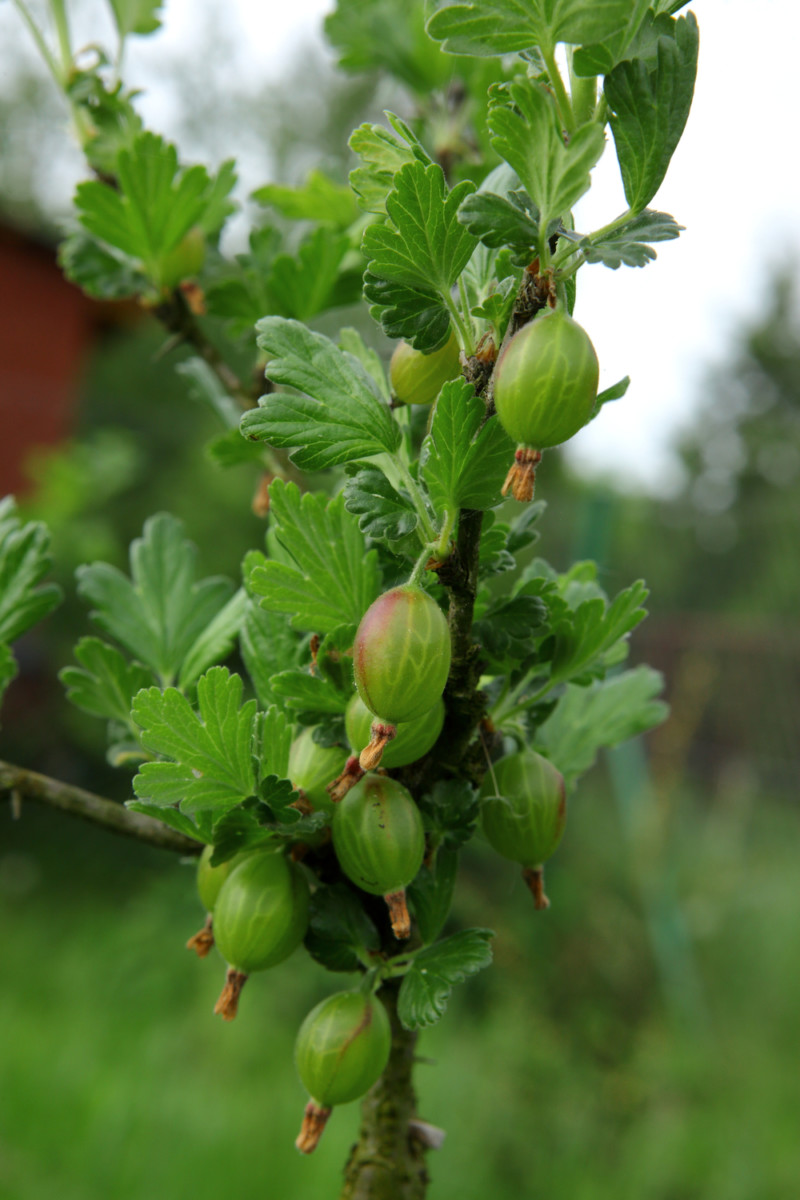
At first glance, most people only know about green gooseberries. There are also red, white and yellow ones, with some varieties falling into the dessert category. If you’ve passed them up before, don’t let the opportunity to plant them in containers pass you on by.
Related reading: How To Plant & Grow A Gooseberry Bush For Endless Summer Harvests
Best Gooseberries to Plant In Containers
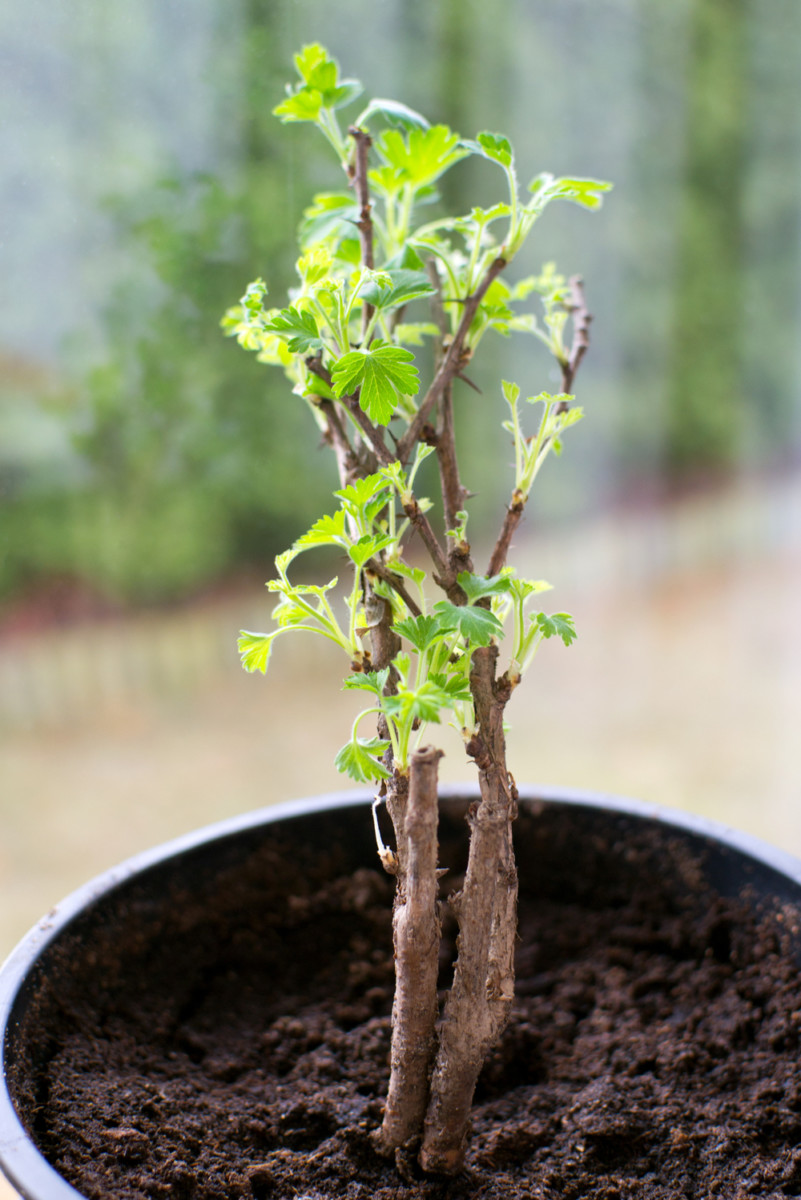
Gooseberries can grow just about anywhere, including pots.
Just be sure to fill a container (12-15″ diameter minimum) with a good quality potting soil with additional compost.
Amish – a heavy bearing bush with pear shaped, burgundy berries; mildew resistant.
Black Velvet – small bushes grow to 3′ tall, producing dark red, medium sized fruits.
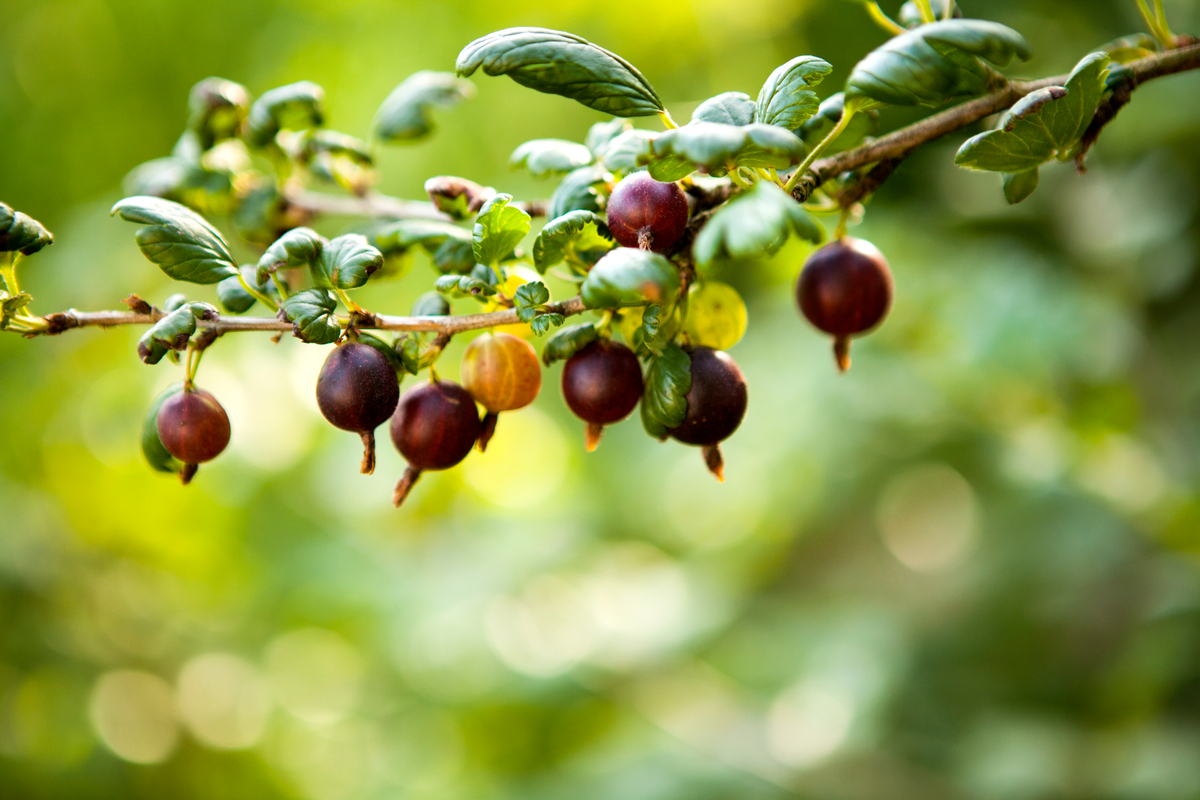
Invicta – if abundance is your wish, this bush will bear large green berries for fresh eating, pies and preserves.
When harvesting, remember to watch out for the thorns!
7. Mulberries
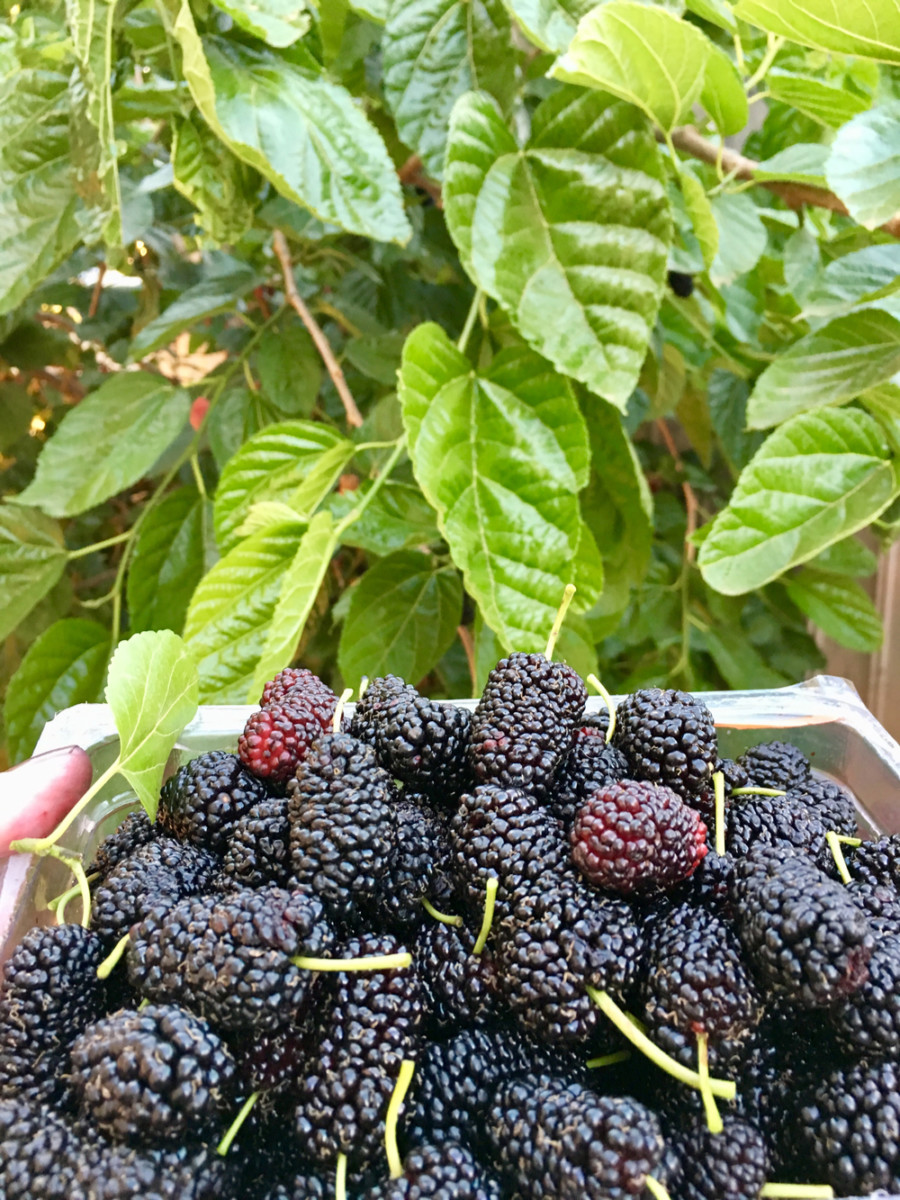
Mulberries grow to 70-80′ high and live for several decades, how could they possibly grow in a pot?
We are talking about dwarf varieties here, those which are suited to pruning back on a regular basis. You can easily keep them cut back (after fruiting) to a small size of 2-6′.
Mulberries are generally forgiving plants, accepting full sun, the occasional wet feet and pot-induced drought. As long as you fertilize them, they will grow and produce as many berries as they possibly can.
In colder climates, mulberries are deciduous. However, in warmer climates, they will hold onto their leaves all year. The flowers and fruit will only emerge when light and temperatures increase.
Best Mulberry Varieties To Grow In Containers
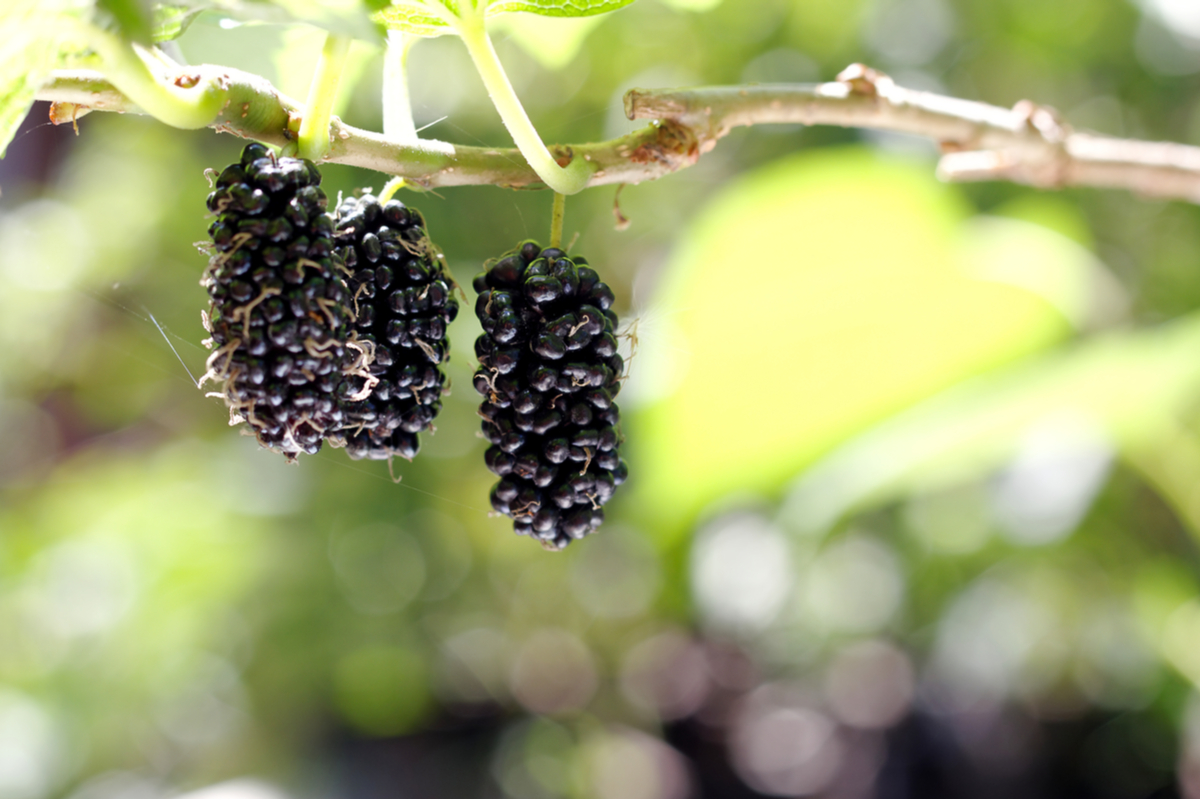
Dried mulberries are one of my favorite fruits to eat, although you’ll rarely find them in a supermarket. You have to grow them yourself.
Dwarf Everbearing Mulberry – (Morus nigra) temptingly delicious black berries fill this dwarf tree canopy in early summer. Pruning after fruiting allows it to be kept under 9′, it also encourages more than one crop a season.
Issai – (Morus alba) a Japenese cultivar that flowers and fruits several times throughout the growing season. Regular pruning keeps it to a manageable size.
If you enjoy the challenge of growing exotics in containers, here are two more ideas before you go: goji berries and jostaberries (a thornless hybrid between a gooseberry and a blackcurrant).
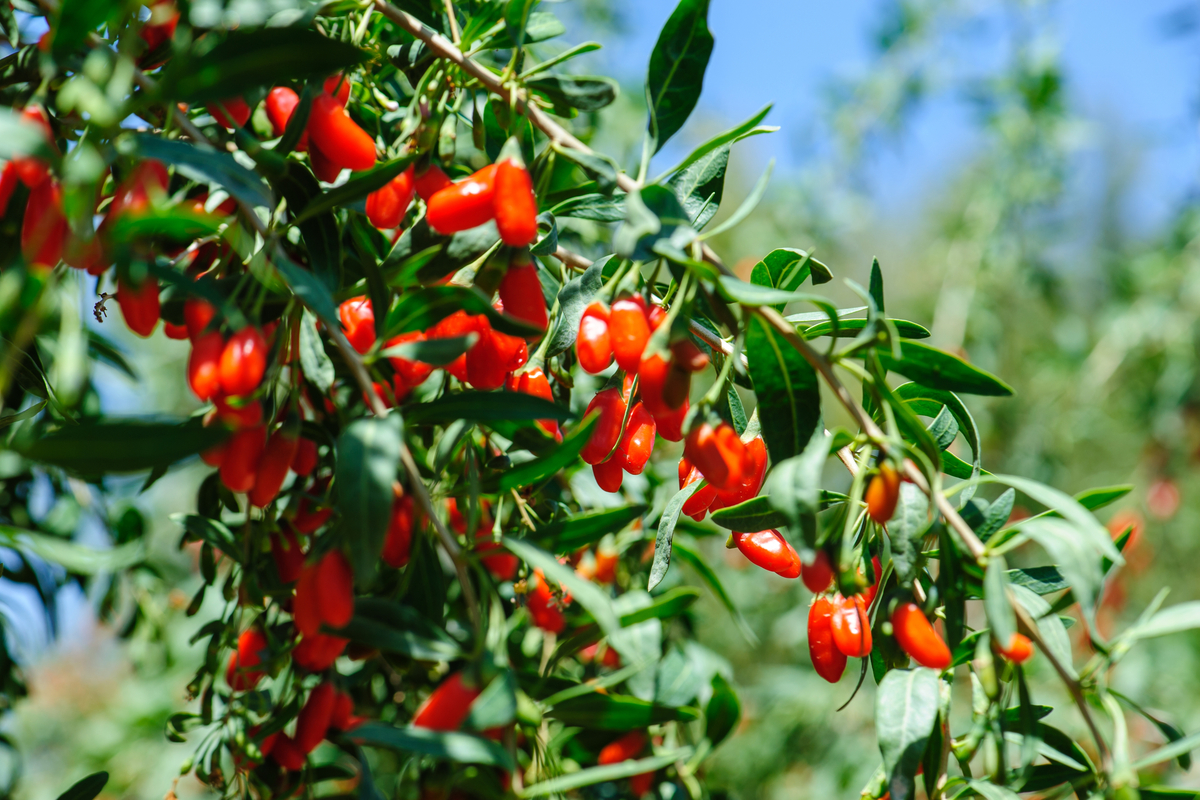

Get the famous Rural Sprout newsletter delivered to your inbox.
Join the 50,000+ gardeners who get timely gardening tutorials, tips and tasks delivered direct to their inbox.

